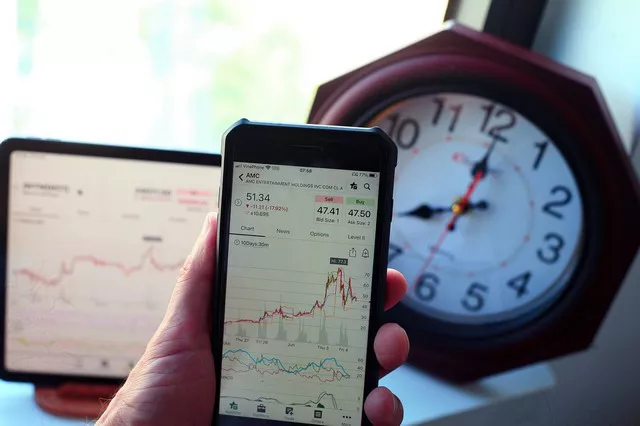In the realm of financial markets, futures contracts stand as powerful instruments for investors to manage risk and speculate on price movements. Understanding the intricacies of how futures contracts are priced is crucial for anyone seeking to navigate the complex world of derivatives. This article aims to shed light on the pricing methods of futures contracts, delving into the underlying mechanisms and factors that play a pivotal role in determining their value.
Market Equilibrium and Futures Pricing
At the heart of futures pricing lies the delicate balance of market forces, encapsulated in the concept of market equilibrium. Futures contracts, serving as standardized agreements to buy or sell an asset at a predetermined future date and price, derive their pricing from the prevailing supply and demand dynamics in the market. The equilibrium is influenced by an array of factors, including economic indicators, geopolitical events, and market sentiment. Understanding this equilibrium is essential to grasp the fundamental principles that govern the pricing of futures contracts.
Supply and Demand Dynamics in Futures Markets
The pricing of futures contracts is intrinsically tied to the forces of supply and demand. As market participants express their views and intentions through buying and selling futures contracts, the equilibrium price adjusts to reflect consensus expectations. The interplay between buyers (bulls) and sellers (bears) sets the stage for price discovery. A robust understanding of these dynamics is crucial for investors aiming to anticipate market movements and make informed decisions regarding their futures positions.
Role of Interest Rates in Futures Pricing
Interest rates play a pivotal role in the pricing of futures contracts, underlining the cost of carrying an asset to the future delivery date. This cost of carry is a fundamental component in determining the fair value of a futures contract. The relationship between the spot price, the risk-free interest rate, and the time to maturity significantly influences futures pricing. Recognizing and interpreting these interest rate dynamics is imperative for investors to comprehend the intrinsic value of a futures contract and make informed trading decisions.
See Also: Why buy futures instead of stocks?
Spot Prices and Their Influence on Futures Valuation
Spot prices, representing the current market value of an asset, play a crucial role in determining the pricing of futures contracts. The convergence of futures and spot prices as the delivery date approaches is a key aspect known as the basis. Analyzing the basis provides insights into market expectations and can assist traders in making informed decisions. The relationship between spot and futures prices is a dynamic one, and understanding this connection is essential for effectively navigating the futures market.
Costs Associated with Trading Futures
The pricing of futures contracts involves consideration of various costs associated with trading. Transaction costs, incurred when entering or exiting a futures position, impact the overall profitability of a trade. Margin requirements, serving as a security deposit to cover potential losses, are a crucial aspect of futures pricing. Additionally, carrying costs such as storage and insurance expenses contribute to the overall cost of holding a futures position. Recognizing and accounting for these costs is integral to understanding the true value of a futures contract.
Standardization and the Efficiency of Futures Pricing
Unlike their over-the-counter (OTC) counterparts, futures contracts are standardized and traded on organized exchanges. This standardization simplifies the pricing process, as the terms of futures contracts are predetermined, reducing negotiation and counterparty risk. The efficiency of pricing in futures markets is heightened due to this standardization, providing market participants with transparent and easily accessible information. This aspect distinguishes futures from other derivative instruments and contributes to the effectiveness of their pricing mechanisms.
Liquidity as a Determinant of Futures Prices
Market liquidity, influenced by the number of participants, trading volumes, and ease of buying or selling an asset, is a critical factor in the pricing of futures contracts. Highly liquid futures markets tend to have narrower bid-ask spreads, reducing trading costs for market participants. Understanding the liquidity dynamics of a futures market is paramount for investors seeking efficient price discovery and execution. Liquidity not only impacts transaction costs but also enhances the overall stability and reliability of futures pricing.
Volatility’s Impact on Futures Prices
Volatility, representing the degree of price fluctuation in the market, is a significant factor influencing futures pricing. Higher volatility introduces increased perceived risk associated with a futures contract, leading to an adjustment in its price. Options pricing models, such as the Black-Scholes model, play a role in estimating future volatility and influencing the pricing of futures contracts with embedded options. Traders must consider volatility as a critical factor in assessing the potential profitability and risk of a futures position.
Regulatory Influences on Futures Pricing
Regulatory frameworks wield substantial influence over the pricing of futures contracts, ensuring fair and transparent trading practices. Regulatory bodies impose rules and standards, including margin requirements, position limits, and reporting obligations, which shape the behavior of market participants. These regulations play a vital role in maintaining market integrity and influencing the pricing of futures contracts. Staying abreast of regulatory developments is imperative for investors to navigate the futures market successfully.
Conclusion
In conclusion, the pricing of futures contracts is a multifaceted process influenced by market equilibrium, supply and demand dynamics, interest rates, spot prices, trading costs, standardization, liquidity, volatility, and regulatory frameworks. A comprehensive understanding of these factors is essential for investors and traders seeking to navigate the complexities of the futures market successfully. As we unravel the dynamics of futures pricing, it becomes evident that a nuanced comprehension of these elements is paramount for making informed decisions and managing risk in the ever-evolving landscape of financial derivatives.


